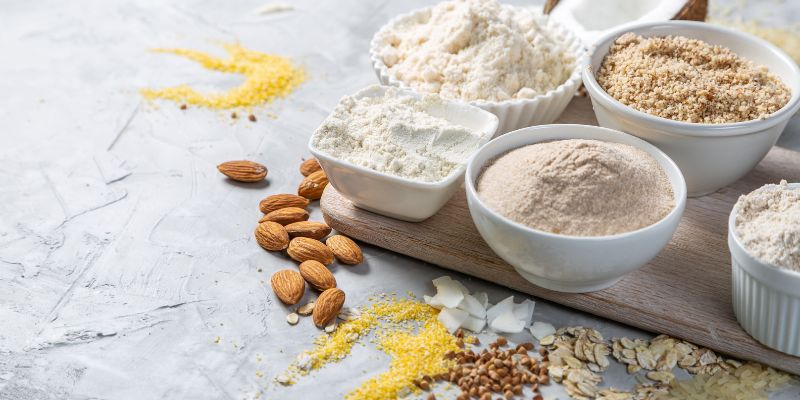How a Rub-On Pain Reliever Can Ease Arthritis Discomfort Naturally
Arthritis can cause joint discomfort, stiffness, and swelling. Many people find relief using rub-on painkillers. These topical therapies relieve discomfort and enhance movement by lowering inflammation, numbing pain, or boosting blood flow. Unlike oral medications, they work straight at the afflicted location. One can easily apply a rub-on pain treatment. It offers rapid relief by absorbing through the skin. Some include naturally occurring painkillers with low side effects.
Others lower inflammation by using medication combinations, including NSAIDs. Many would rather use topical treatments to minimize long-term pharmaceutical dangers and prevent stomach problems from pills. The proper product will depend on needs and symptoms. This article investigates the advantages, safe use, and mechanism of action of rub-on painkillers.

How Do Rub-On Pain Relievers Work?
Rub-on painkillers reduce agony by delivering active chemicals straight through the skin. They offer consolation in several ways. While capsaicin, produced from chili peppers, provides warmth, some have a cooling or heating effect, and menthol and camphor produce a cooling sensation. These impulses provide brief respite by diverting the brain from pain. Others lower inflammation by using NSAIDs like diclofenac, which assist in lessening joint swelling and stiffness. Some formulations stop pain from getting to the brain by interfering with nerve transmission, blocking pain signals.
Treatments start functioning in minutes and can continue for many hours, depending on the formula. As advised, regular reapplying guarantees consistent relief. Unlike oral medications, rub-on painkillers target certain locations, reducing adverse effects. Many people find them to be better than medicines in avoiding stomach upset. The degree of pain and personal requirements will determine the correct product.
Benefits of Using a Rub-On Pain Reliever
For arthritis aches, many patients like rub-on painkillers. These are the reasons they make sense:
- Targeted Relief: Rub-on painkillers are useful for joints like knees, palms, elbows, or shoulders since they operate straight where administered. This focused action releases pain without compromising the whole body.
- Fewer Side Effects: Unlike oral medications, which could aggravate gastrointestinal problems, sleepiness, or liver strain, topical therapies reduce these dangers. Given their application to the skin, they offer relief with less overall side effects.
- Non-Addictive Option: Certain oral painkillers have habit-forming effects that, over time, cause dependency. Topical therapies provide a safer substitute by relieving pain effectively without running the danger of addiction.
- Easy to Use: Rub-on analgesics are easy to use. Just massage a tiny bit onto the afflicted joint. They're a handy choice for daily usage since they absorb swiftly and begin functioning fast.
- Can Be Used With Other Treatments: Topical painkillers can augment other arthritis treatments, including physical therapy, mild exercise, or prescription medications, to assist in controlling pain between treatments for maximum mobility and comfort.
Types of Rub-On Pain Relievers
Various active elements abound in different rub-on painkillers. Choosing the correct one is much easier when one knows the varieties.
- Menthol-Based Gels and Creams: Menthol has a cooling effect that helps one focus away from discomfort. It provides temporary comfort for aching muscles and joints. Several over-the-counter brands offer menthol, which is used quickly and comfortably. These gels are especially helpful for minor arthritis pain and muscle soreness.
- Capsaicin Creams: Chili pepper capsaicin makes one warm and blocks pain signals over time. Regular use increases efficacy; some people may first feel slight burning. Applied consistently, it helps most and can bring long-term relief.
- NSAID-Based Topicals: Anti-inflammatory medications like diclofenac help lower swelling and stiffness. Doctors advise them for alleviation from arthritis. For long-term usage, they enable the safe regulation of inflammation.
- Salicylate-Based Creams: Like aspirin, salicylates can ease mild inflammation and pain in arthritis. They are a decent choice for sporadic joint trouble. Those sensitive to oral medication and seeking mild relief will find these creams helpful.

How to Use a Rub-On Pain Reliever Safely?
Correct usage of rub-on medicines offers both effective and safe relief. Always read and use the product as directed; too much will irritate your skin. Properly wash your hands after use, especially with ingredients like capsaicin, which may burn if it touches the nose or eyes. Steer clear of lotion use on broken, injured, or irritated skin since it could burn or hurt.
Use the product exactly as directed; overuse might result in redness or irritation. Do a patch test with tiny amounts applied to a small skin region to evaluate a new product; then wait 24 hours to observe if any allergic reaction arises. Furthermore, it is crucial to have proper storage and maintain creams in a cool, dry atmosphere since heat or moisture can reduce their potency.
Choosing the Right Rub-On Pain Reliever
Your symptoms and tastes will determine the appropriate rub-on pain relief for you. Think about these elements before deciding what to do:
- Type of Pain: While warming creams assist in easing stiffness and discomfort, cooling gel works well for intense or scorching pain. Choose depending on what helps calm your discomfort the most.
- Ingredients: While some people need stronger medication, such as NSAIDs, to lower inflammation and joint stiffness, others prefer natural formulations using menthol, camphor, or capsaicin.
- Sensitivity: For sensitive skin, consider hypoallergenic or fragrance-free products to prevent allergic reactions, redness, or irritation. Always check the label for possible irritants.
- Application Method: Some items arrive in roll-ons, creams, sprays, or gel form. Choose one based on your need that is simple and pleasant to apply.
- Duration of Relief: While some formulations offer long-lasting effects for continuous comfort, others offer temporary relief and must be often reapplied.
- Doctor’s Advice: If unsure, see a pharmacist or doctor to find the appropriate product for your general health and arthritic symptoms.
Conclusion:
A rub-on pain therapy naturally reduces arthritis discomfort by providing concentrated relief with fewer side effects than oral medications. Every topical treatment has unique benefits—menthol, capsaicin, NSAIDs, or otherwise. They are simple, fast absorbing, and start working minutes away. Correct use guarantees safety and efficiency; it reduces pain and stiffness and increases mobility. Many would prefer to avoid using medications to cause stomach issues. The right formula will depend on the degree of suffering and personal needs. With suitable rub-on pain therapy, those with arthritis will be more comfortable and have more daily movement.












